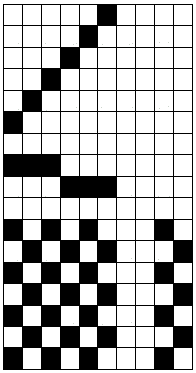Kawo kawo fiber and cotton fiber blended down-proof and anti-mite fabric and weaving method for same
A kapok fiber and cotton fiber technology, applied in textiles, papermaking, textile, fiber treatment, etc., can solve the problems of chemical fiber filaments such as poor moisture absorption and perspiration, and reduced comfort, and achieve good natural anti-mite properties, good moisture absorption, and hand feeling smooth effect
- Summary
- Abstract
- Description
- Claims
- Application Information
AI Technical Summary
Problems solved by technology
Method used
Image
Examples
Embodiment 1
[0024] Example 1: The warp yarn number is 14.5tex, and the blending ratio is: kapok fiber weight percentage is 20%, cotton fiber weight percentage is 80%; the weft yarn number is 9.7tex, and the blending ratio is: kapok fiber weight percentage is 20% , Cotton fiber weight percentage is 80%.
Embodiment 2
[0025] Example 2: The warp yarn number is 14.5tex, the blending ratio is: kapok fiber weight percentage is 25%, cotton weight percentage is 75%; the weft yarn number is 9.7tex, the blending ratio is: kapok fiber weight percentage is 15% , The weight percentage of cotton fiber is 85%.
Embodiment 3
[0026] Example 3: The number of warp yarns is 14.5 tex, and the blending ratio is: 30% by weight of kapok fiber, 70% by weight of cotton fiber; the number of weft yarn is 9.7 tex, and the blending ratio is: 30% by weight of kapok fiber , 70% by weight of cotton fiber.
[0027] The steps of the weaving method are as follows: winding process → warping process → sizing process → reeding process → weaving process → finishing process;
[0028] (1) Winding process:
[0029] Using Murata 21C automatic winder, the cotton / kapok 14.5tex bobbin is wound into a well-formed, large capacity, and the winding density is 0.7 / cm 3 To remove the neps, coarse details and other defects and impurities on the yarn;
[0030] (2) Warping process:
[0031] Warping 750 cotton / kapok yarns of 14.5 tex with a length of 5200 meters to form a yarn sheet with uniform tension, which is wound in close parallel on 12 warp beams, and the total number of warping is 9,000;
[0032] (3) Sizing process:
[0033] A. Preparation ...
PUM
 Login to View More
Login to View More Abstract
Description
Claims
Application Information
 Login to View More
Login to View More - R&D
- Intellectual Property
- Life Sciences
- Materials
- Tech Scout
- Unparalleled Data Quality
- Higher Quality Content
- 60% Fewer Hallucinations
Browse by: Latest US Patents, China's latest patents, Technical Efficacy Thesaurus, Application Domain, Technology Topic, Popular Technical Reports.
© 2025 PatSnap. All rights reserved.Legal|Privacy policy|Modern Slavery Act Transparency Statement|Sitemap|About US| Contact US: help@patsnap.com

